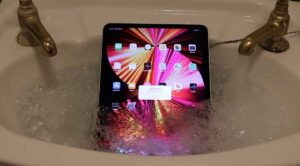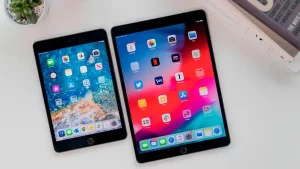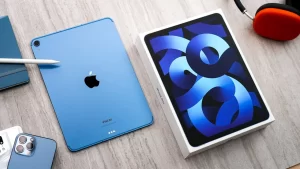The question of whether iPads are waterproof is an important consideration for many users, especially those who use their devices in various environments and conditions. As iPads have become integral tools for work, education, and entertainment, understanding their durability and resistance to water damage is crucial. Unlike some smartphones, which are marketed with specific water resistance ratings, iPads do not typically feature such specifications. This can lead to confusion and uncertainty about how well these devices can withstand exposure to water.

Apple has not officially marketed any iPad models as waterproof. This means that, unlike certain iPhone models that come with an IP68 rating indicating water and dust resistance, iPads are generally not designed to endure submersion in water or heavy exposure to moisture. Users should be cautious when using their iPads near water sources, such as pools, beaches, or even during rainy weather. The absence of a water resistance rating implies that iPads are susceptible to water damage, which can lead to costly repairs or replacements.
For those needing to use their iPads in potentially wet environments, investing in protective accessories can provide a solution. Waterproof cases and covers are available, designed to safeguard iPads from accidental splashes, spills, and brief submersion. These accessories can significantly enhance the durability of the device in challenging conditions, allowing users to enjoy the full functionality of their iPads without worrying about water damage. By taking these precautions, iPad users can better protect their devices and extend their longevity, ensuring continued performance and reliability.
Are iPads Waterproof?
None of Apple’s iPads are designed to be waterproof or even water-resistant. This means that if water manages to seep into the iPad and reaches the internal components, the device could suffer from significant water damage, leading to malfunction. The risk is especially high in scenarios where the iPad might be exposed to substantial amounts of water, such as being dropped in a pool. In such a situation, the water can quickly penetrate the device, likely causing irreversible damage unless an extraordinary stroke of luck prevents it. The consequences of water exposure can be severe, often resulting in the need for costly repairs or a complete replacement of the device. Given this vulnerability, it is crucial for iPad users to exercise caution around water and consider using protective accessories if they anticipate using their device in wet environments.
Read Also:- How To Undo In Notes App On Your iphone Or iPad?
What To Do If Your iPad Gets Wet
If your iPad gets wet, it is important to take immediate action to mitigate potential water damage. Start by using a clean microfiber cloth to gently wipe down the device. While any cloth can be used, a microfiber cloth is particularly effective because it can absorb more moisture rather than just spreading it around the surface of the iPad. Carefully dab and wipe the entire exterior of the iPad, paying special attention to areas where water might have entered, such as the ports and speaker holes.

When cleaning the ports and speaker holes, try to get the microfiber cloth as close to these openings as possible without pushing water further inside. If necessary, you can use a dry cotton swab or a soft-bristled brush to reach into these small areas, helping to soak up any trapped moisture. Avoid using excessive force or inserting objects too deeply, as this could cause further damage to the delicate components inside.
After drying the exterior, it’s advisable to leave the iPad in a dry, warm environment to allow any remaining internal moisture to evaporate. You might consider placing the device in a container with silica gel packets or uncooked rice to help draw out the moisture. Do not attempt to turn on or charge the iPad until you are confident that it is completely dry, as powering on the device while it is still wet could cause short circuits and additional damage. Taking these steps promptly and carefully can help reduce the risk of permanent damage and potentially save your iPad from malfunctioning due to water exposure.
Be Sure To Dry Off Your iPad As Much As Possible Before Letting It Air Dry
After wiping down your wet iPad with a clean microfiber cloth and attending to the ports and speaker holes, the next crucial step is to power it off immediately. Avoid plugging it into a charger at this stage, as attempting to charge a wet device can exacerbate the damage by potentially causing short circuits. If your iPad has a SIM card, eject it to allow any trapped moisture to escape, and then let the device air out.

To facilitate drying, position your iPad upright so that the home button and charging port are facing downward. This orientation helps any remaining water to drain away from the internal components. Allow your iPad to dry naturally in this position for at least 24 hours. This extended period ensures that all moisture has had sufficient time to evaporate, reducing the risk of internal damage.
After the drying period, cautiously attempt to power on your iPad. If it does not turn on initially, resist the urge to force it and refrain from charging it immediately. Instead, wait a little longer to see if additional drying time is needed. If the iPad still does not power on after the 24-hour period, you can try charging it and then attempting to power it on again.
Conclusion
iPads are not waterproof or water-resistant devices. Exposing an iPad to water can lead to significant damage to its internal components, potentially causing malfunctions or rendering the device unusable. Therefore, it is essential for iPad users to exercise caution when using their devices near water sources or in wet environments. If an iPad does come into contact with water, immediate action should be taken to dry it thoroughly and avoid powering it on or attempting to charge it until it is completely dry.
While some protective measures, such as using a waterproof case, can help minimize the risk of water damage, it is crucial to recognize that iPads are not designed to withstand submersion or heavy exposure to water. By understanding the limitations of their devices and taking appropriate precautions, iPad users can prolong the lifespan of their devices and avoid costly repairs or replacements due to water damage.
